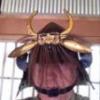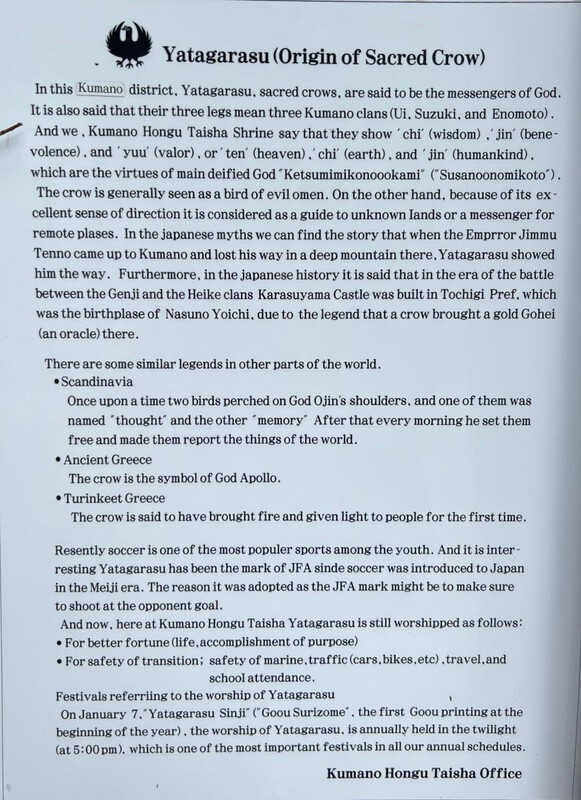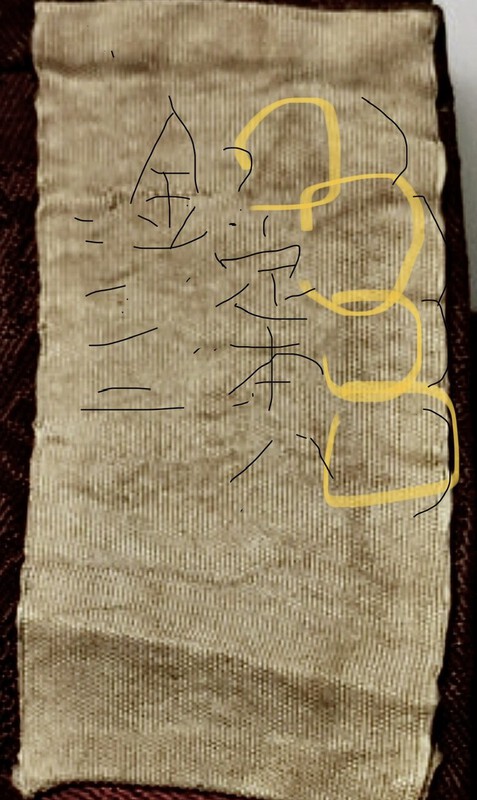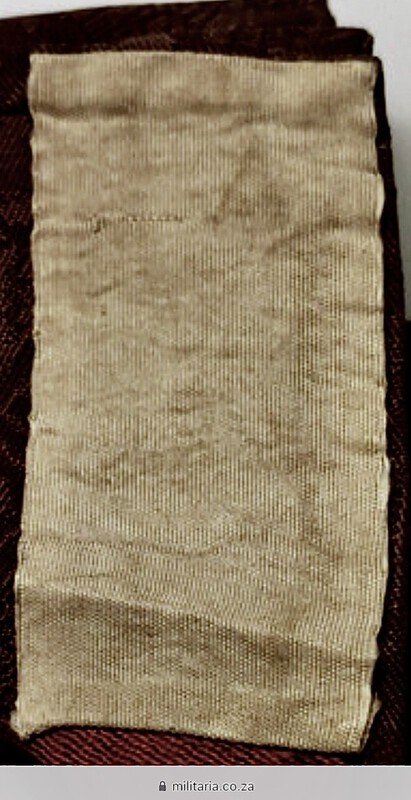-
Posts
12,564 -
Joined
-
Last visited
-
Days Won
202
Content Type
Profiles
Forums
Events
Store
Downloads
Gallery
Everything posted by Bugyotsuji
-
-
Colin, let us know when you receive it. Definitely alluding to the 47 Ronin as suggested above. See the Asano family crest on the guy's hitatare. ('Chigai Takano no Ha', or crossed hawk/falcon feathers.) 浅野氏 - Wikipedia
-

Edo Period Corner Part II
Bugyotsuji replied to estcrh's topic in General Nihonto Related Discussion
Well, yes, absolutely. I was given so much advice yesterday that I could not absorb or visualize it all. Standing in a large tatamai mat room with not a bottle, cloth nor tool in sight. When the togishi gives back the first blade, possibly at our first sword appreciation meet next month, we have already agreed to discuss the second blade after any intervening further thoughts, and thus what to do or how to take it further. His feeling was that it did not need any intervention with stones., that the polish was/is good enough as it is. I will make sure to ask him again, Bruce, exactly what they were trying to describe. In an ideal world I would love to watch them working on it with these substances before trying it out myself. I even got a sense that the kaji was describing localized spot treatment with oil to 'lift' the little verruca spiderweb marking (rust? mold/mould?), and then to hit the oil with, what did he say, the opposite, (acetone, ethanol?). I do not have either of the latter, so I cannot go wrong. Watch this space. In the meantime last night I oiled this blade for the first time since I've had it. I removed the oil normally with soft tissues, then gave it a light uchiko course, and finally oiled it lovingly once more. Most but not all of the second oil I again removed before resheathing it. He did say something about soaking, I recall now, making sure the oil worked its way into the steel, which gave me a momentary 'spongy' image! -

Edo Period Corner Part II
Bugyotsuji replied to estcrh's topic in General Nihonto Related Discussion
Today we had an interesting meet to see some of the Hōnō blades in a large shrine nearby. The Kan-nushi explained that these blades had all been offered to the gods at various times and that we should enter into the same spirit when viewing them. My feeling was that those smiths who gave their blades must have been quite satisfied and confident in their work. During the meet, I had the polisher look at the umégané job above on the Sukesada blade, and he has agreed to polish the recently filled section. (Something to look forward to.) As to the other mumei wakizashi in mounts, he said that the polish is not an immediate concern. Despite some discolourings and one ‘spiderweb’ rust(?) nest, he and a smith who was watching both agreed that it will clean up with other methods, short of Togi work. Use oil and alcohol (ethanol?) alternatively to lift and shift it, and clean it off with uchiko they said. “But the hiké cannot be helped…” The blade itself has been a mystery to me but today there was a suggestion to look at Shintō 因州 In-Shū 兼先 Kanesaki and narrow it from there. -
The first link contains an explanation in Japanese from an issue of the NBTHK magazine: 刀 葵紋崩し 烈公 (KA-100823)|刀・日本刀の販売なら日本刀専門店の【銀座 誠友堂】 (seiyudo.com) It would take me while to read the whole thing... And Matt's second link says this, mentioning it being based on a Kiku chrysanthemum: 特筆すべきは、第一目釘穴の上中央に十八葉の変わり菊花紋を彫ることです。 水戸では古来より『葵崩し紋』と呼び、一般的には時計のように見えるため、『時計紋』とも呼ばれます。しかしながら、幕末以降、この紋の入った贋作が多数出回っており、正真確実な作は滅多にお目に掛かりません。
-
"Aoi Mon Kuzushi", (?) then "Rekko", it says. (To me it looks more like a Yuki snow flake Mon which you see on the imperial palace storehouse during coronation ceremonies.)
-
Hmmm... strange that they tell you for display purposes only and not for sale, but then supply the order buttons etc.
-
If it is Sekiren, as Morita San says, then other possibilities appear, such as a spurious signature ar a later (unlisted) carver. There was also a Sekiran, who used a variety of signatures, and who carved classical Chinese subjects such as sages. See this entry on page 718 of the MCI.
-
Sweet. Check out hermits (sennin) with a peach. (To-bo-saku Sen-nin for example.) The signature looks like 石斎 Sekisai. There was a known *Netsuke artist listed in Ito Ryoichi (An Introduction to Japanese Netsuke) who worked (mainly in ceramics) in the latter part of the Edo period. (*Pronounced 'Netsukay' or 'Netsukeh')
-
-

Meaning of Kanji and Katakana on fittings
Bugyotsuji replied to PNSSHOGUN's topic in Translation Assistance
-
Did Princess Leia have a broom?
-

Meaning of Kanji and Katakana on fittings
Bugyotsuji replied to PNSSHOGUN's topic in Translation Assistance
Aaarrrggghhhh… no, I take it all back, John! Actually it does look like a typical three-line address in Japanese, down to the house number, owner name too(?). 定本 Sadamoto? -
That bottom character looks like an H…(?)
-
The rust on the Nakago will help establish age. A few pics of the blade shape and steel features will also give more information, besides what you have already read up on the smith(s) with this name.
-

Meaning of Kanji and Katakana on fittings
Bugyotsuji replied to PNSSHOGUN's topic in Translation Assistance
Well ’Yo’ fits nicely with Yoshio, John. Keep the possibility open! So where's this bag? -

Meaning of Kanji and Katakana on fittings
Bugyotsuji replied to PNSSHOGUN's topic in Translation Assistance
Agreed. 'Yo' could be the artisan's mark. Sometimes you see face alignment marks for the order of tsuba, seppa and tsuka. -

Meaning of Kanji and Katakana on fittings
Bugyotsuji replied to PNSSHOGUN's topic in Translation Assistance
柄 means hilt, grip, handle, haft, etc. 順 means (in) order as in 1,2,3 or a,b,c… Would it be possible to see an example of the katakana lettering? Do we read from left or right, and do we break it up into words? There are several possibilities from either direction, but nothing immediately obvious. Tsuka could be 柄 as above… and ノ could be part of a name like Shino, or it could be the preposition ‘of’. -
That's close to what I was meaning. Most people just wear a tie in different ways for different occasions, as the fashion demands. Very few would be able to give the story behind the various evolutions of the necktie. It's vestigial, but a symbol of something... conformity to societal norms? At the moment I am still struggling in my head to work out how to display a handachi koshirae, with the splendid sageo knot above or below...
-
Or you could ask, why do people wear a necktie?
-
Well, the ス (Su) and 水 (Sui/Mizu) are pretty clear, but the other Kanji are so badly written... are they trying to say 槌田 Tsuchida or something. It's as if each one is an attempt to write a name ending in 田, with a rather uncommon and difficult kanji to start with. Then there's that one bottom left, 着 or 若?as if the wood itself is not suitable for the brush the artisan is using.
-

Help on the value of a damaged Katana
Bugyotsuji replied to Kyle68's topic in General Nihonto Related Discussion
Just paid that amount for a new tsukamaki on a wakizashi. -
Hi Chris, Gifu, Seki kaji. No post-war work. Check this out: - 井戸秀俊 Ido Hidetoshi - 日本刀の通信販売 明倫産業株式会社 (nipponto.co.jp)
-

Example of "shi" in a date
Bugyotsuji replied to John C's topic in General Nihonto Related Discussion
Sometimes you will see the four strokes radiating out like cat's whiskers, i.e. not parallel. -
Dale, those might be 'Maki' or 'Takigi' bundles of kindling wood.











